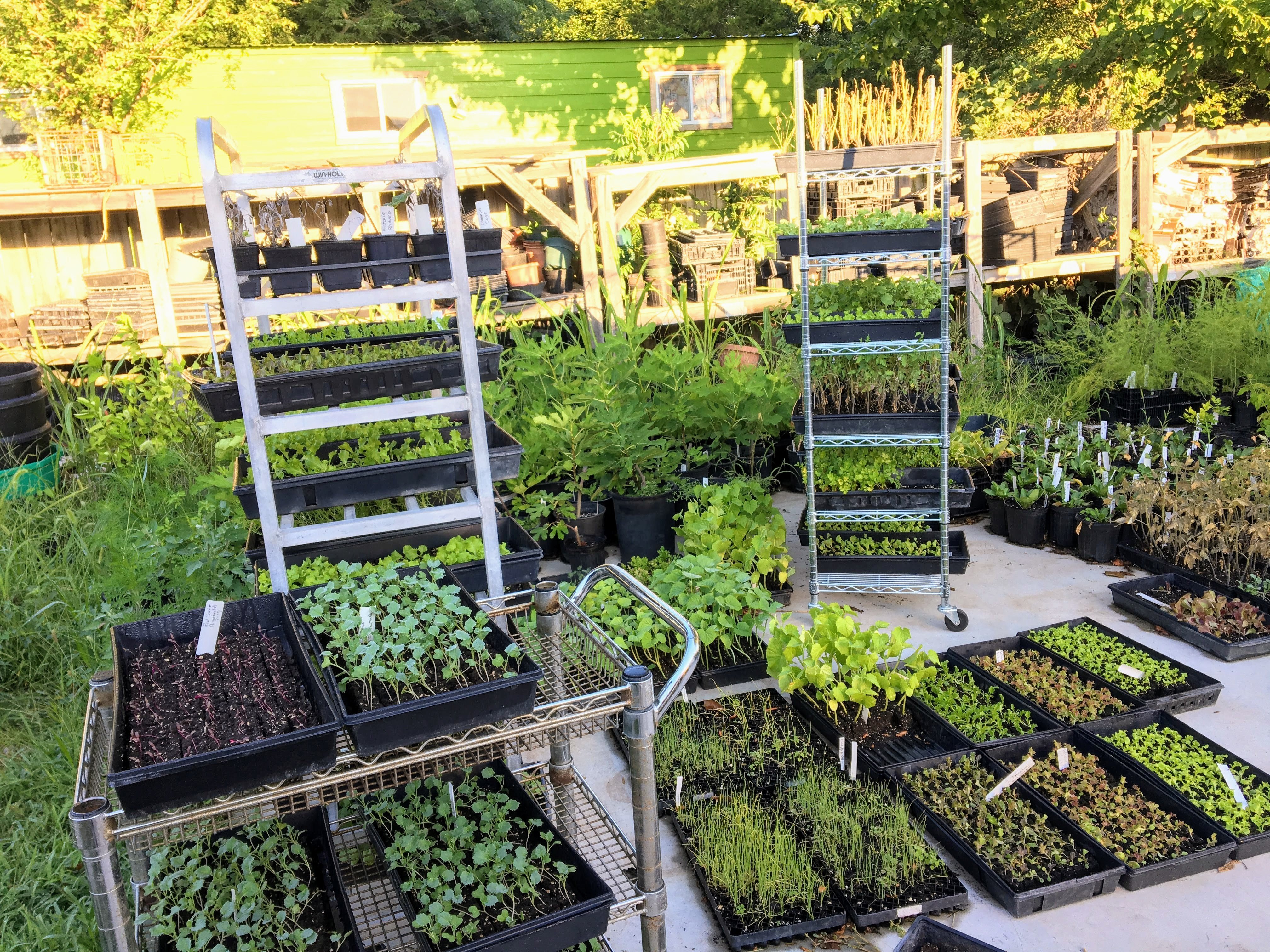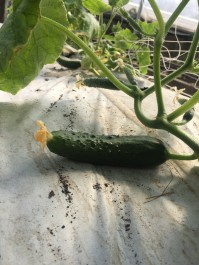We love cucumbers! They are one of the sure signs on Millsap Farm that warm weather is really here, and they are one of our favorite crops to grow, eat, and share. Cucumbers are also one of the more challenging crops to grow organically in the Ozarks, mostly due to a bug and a bacteria: Here is the story of cucumbers on Millsap Farm. Every year, when we first started out farming, we would plant cucumbers into the field around the middle of April, and as soon as the soil warmed up, the plants would start growing like crazy. I don’t know of any vegetable that grows as fast as a cucumber; one day they are just a few inches tall, and a few days later they are vines several feet long (or tall, if you trellis them like we do). Our first crop, our first year, was a huge success, and we harvested hundreds of pounds of cucumber off of one row for two months. However, in subsequent years, we started to have a much shorter cucumber season, due to the plants dying of Bacterial Wilt, a bacteria which infects the plants, and causes the sap to thicken to the point that it can’t flow enough to keep the plant hydrated. Initially the plants look wilted , like they haven’t been watered, and then within a few days they are completely dead. It’s very disheartening. After that first successful year, we often would only get a week or two of cucumber harvest, and then our whole planting would be dead. This disease is spread by a pernicious little bug called a cucumber beetle (little black and yellow beetles that look like skinny lady beetles), who chew and bite cucumber leaves, stems, and fruit. After several years of battling the cucumber beetles and the wilt they spread, we finally came up with two approaches that have helped us keep cucumbers healthy on our farm. First, we plant early, and we keep planting all season long. We plant at least four rounds of cucumbers every season, sometimes as many as six, starting in mid March, and ending in late August. This gives us the best chance of getting some cukes, as some die, but others are always waiting to take their place. Secondly, we plant in a variety of environments; we start in the chinese greenhouse, where we can plant the earliest vines, and then plant into the screened-in cucumber greenhouse, and then finally into our big greenhouse. By moving them around on the farm we keep the beetles guessing, and spread our risk, as well as use some spaces that physically exclude them, such as the screen house. All this so we can grow beautiful cucumbers, and have a steady supply of them. That’s the tale of cucumber pest control on the farm, I hope you’ve been enjoying them, we will have a lapse in cucumbers for the next couple of weeks, as our screen house cukes are dead, and the next succession is just starting to bloom. Thanks, Farmer Curtis



